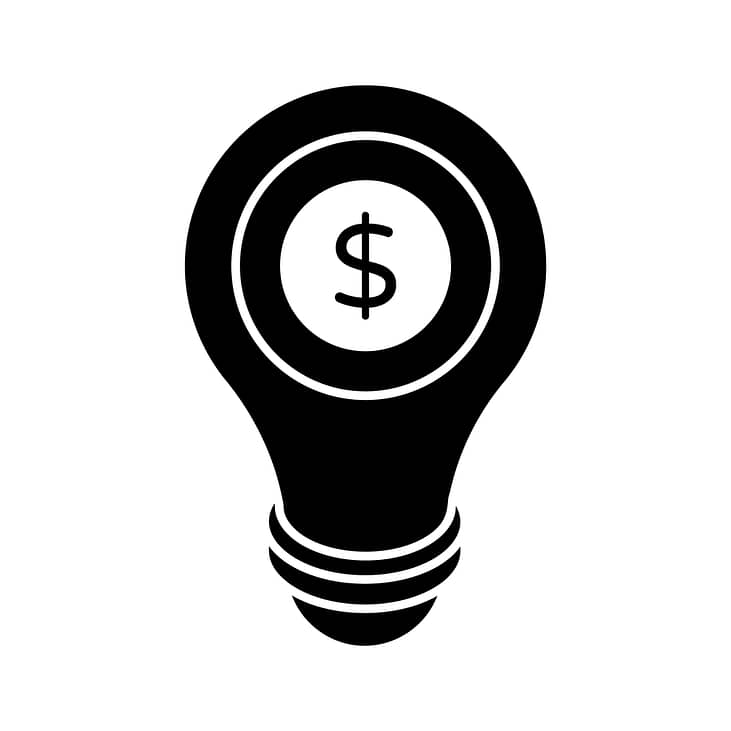The traditional utility grid is no longer the backbone of modern energy—it’s becoming the bottleneck.
As industries race toward electrification, renewable integration, and localized power independence, distributed generation is reshaping the energy landscape. The challenge? Legacy grids were never built for multi-source, bidirectional energy flow. Utility companies, OEMs, and infrastructure leaders must now reengineer for resilience while navigating regulatory shifts, real-time demand, and supply chain volatility.
The balancing act is no longer technical alone—it’s leadership-driven. The right executive team must fuse Power Electronics expertise with digital transformation fluency, a deep understanding of Industry 4.0, and scalable strategies for human capital continuity.
“Grid resilience begins with leadership alignment.”
The Rise of Distributed Generation in the Power Electronics Era
The future of energy isn’t centralized—it’s distributed. From rural microgrids to EV-charging nodes and industrial solar-plus-storage systems, power is moving closer to where it’s consumed. Distributed generation is fast becoming the operating standard, driven by digital monitoring, decentralized control, and advanced power electronics.
This shift introduces a new paradigm: energy systems that must be intelligent, reactive, and autonomous. Yet legacy utilities and manufacturers remain anchored to infrastructure and leadership models built for the previous century.
In response, forward-thinking organizations are evolving their talent base—recruiting engineering and operations executives who can straddle the line between traditional grid architecture and next-gen deployment models. The pressure is particularly intense on CEOs and CTOs to reimagine capital allocation, risk management, and market participation.
“Distributed generation decentralizes energy—but demands centralized leadership clarity.”
Industry 4.0 and Utility Infrastructure: Real-Time Demands, Long-Term Strategy
Industry 4.0 is no longer a buzzword—it’s the new baseline for competitiveness.
As smart sensors, AI-enabled diagnostics, and predictive maintenance enter the utility ecosystem, companies must not only deploy technology but also rewire how decisions are made. Automation drives efficiency, but without the right leadership strategy, it can also create data paralysis or fragmented execution.
The challenge lies in integration. The control systems that govern distributed energy must now interface with enterprise software, demand response protocols, and policy layers—all in real time. That convergence requires a new kind of leader: one fluent in both power electronics and operational intelligence.
Boards are increasingly aware of the gap between current capability and future necessity. In turn, they’re turning to specialized executive search partners to identify leaders who’ve operated in complex, sensor-rich, data-heavy environments—and delivered results.
“In a smart grid, slow leadership is the new outage.”
Talent Risk in the Age of Smart Grids
Energy companies are facing a silent crisis: a looming shortage of technical leadership that can scale with market complexity. As aging executives retire and mid-career talent pivots toward tech or clean energy startups, the talent pool is shrinking where it matters most.
That’s particularly true in utility-adjacent sectors such as power electronics, grid infrastructure, and intelligent controls—fields where recruiting errors aren’t just inconvenient, they’re infrastructure-threatening.
A missed hire in this space doesn’t delay a product launch. It can destabilize service delivery or attract regulatory scrutiny. That’s why CEO and CXO turnover in utilities is now seen as a national concern in several markets. Risk-averse Boards are reevaluating their succession models and redefining what executive readiness looks like in an Industry 4.0 energy environment.
The outcome? A premium is now placed on proven transformation leaders—those who’ve modernized legacy systems, integrated digital layers, and retained operational uptime.
“The grid won’t fail from voltage—it’ll fail from leadership missteps.”
Executive Search for Power Electronics Leadership
The complexity of distributed power generation and Industry 4.0 doesn’t just call for a smarter grid—it calls for smarter leadership recruiting.
Legacy executive search models—based on job specs and keyword filters—fail to capture the nuance required in today’s energy sector. Leading recruiters now deploy performance modeling, behavioral benchmarking, and succession planning frameworks to identify candidates who can lead through regulatory disruption, capital constraints, and cross-sector convergence.
In power electronics, where technology cycles move faster than regulatory cycles, successful executive search means finding leaders who understand voltage, bandwidth, and boardroom dynamics in equal measure. These are not easy profiles to find. But when discovered and placed well, they become organizational multipliers.
A recent example: A mid-cap inverter manufacturer tripled its market share in 24 months after placing a CTO from outside the traditional utility space—identified through a highly specialized retained search process.
How can you hedge against hiring the right firm when there are many slick-speaking sales people working in the big firms? A good gauge should be on action, not words…meaning, if they are truly great why do they only offer a 6-12 month replacement guarantee?
“In distributed energy, recruiting isn’t transactional—it’s a strategic edge.”
Succession Planning for Utilities and CleanTech Manufacturers
In the race to modernize utility infrastructure and energy delivery, one vulnerability remains: the succession gap. CleanTech manufacturers and grid operators alike are facing a generational turnover of leadership—just as system complexity and regulatory scrutiny peak.
Boards that treat succession as a future problem risk operational stalls and strategic drift. Those that build succession pipelines now—through structured development programs and forward-looking executive search—create organizational resilience.
Succession is not just about finding a replacement. It’s about identifying leadership capable of scaling complexity, maintaining uptime, and integrating next-generation technologies such as predictive analytics, AI, and distributed power electronics.
In a recent blog post on pre-employment background checks, we noted:
“Comprehensive pre‑employment background checks safeguard investor confidence and fortify CEO succession outcomes.”
The same holds true here. Utilities and energy firms that apply this discipline proactively avoid costly leadership surprises—especially during infrastructure modernization efforts.
“Strong succession plans don’t just replace leaders—they protect grid stability.”
Regional Trends and Talent Migration
Leadership in power electronics is no longer constrained by borders. As utility modernization unfolds at different paces globally, executive talent is migrating toward regions with the most opportunity, investment, and innovation.
Southeast Asia is rapidly becoming a magnet for smart grid leadership. Germany and Scandinavia are leading in decentralized renewables. Meanwhile, U.S. utilities are grappling with aging infrastructure and the complexities of DER (distributed energy resource) integration.
Companies operating in multiple geographies must now recruit with precision—balancing local expertise with global mindset. This requires recruiters who understand talent flows, compensation nuances, and regional leadership expectations in the context of Industry 4.0.
Boards that ignore these regional dynamics risk missing out on top-tier talent—or overpaying for misaligned executives. Talent mapping and competitive intelligence, conducted by a retained executive search partner, ensure your utility or clean energy firm is not just hiring reactively—but building globally aware teams.
“The smartest grids are built by the most mobile leaders.”
Future-Proofing Utility Performance Through Technical Leadership
As the energy ecosystem converges with technology, Boards are recognizing that performance isn’t just about output—it’s about architecture, interoperability, and strategic leadership.
To future-proof operations, utilities are embedding digital resilience into their C-suite. This includes recruiting CEOs, CTOs, and COOs with proven track records in transformation, automation, and industrial-scale power electronics deployment.
This isn’t a simple leadership shift. It’s a systemic redesign.
As discussed in our blog on Next‑Generation IoT Security:
“Next‑generation IoT security demands integrated leadership that juxtaposes device connectivity with board-level resilience.”
The same principle applies to power infrastructure. Leadership must now span both physical and cyber resilience, real-time data interpretation, and regulatory navigation.
Firms relying on traditional leadership profiles will not scale with evolving utility needs. But those building adaptable, tech-forward C-suites will lead the next energy chapter.
“In power delivery, resilience is a leadership trait—not just a systems feature.”
Balancing Grids Begins by Aligning Leadership
Distributed generation, regulatory complexity, and digital infrastructure have fundamentally reshaped the energy industry. The next wave of winners won’t be defined by hardware alone—they’ll be defined by leadership alignment.
Executive search, when executed with precision and foresight, becomes a tool not just for hiring—but for engineering utility continuity. From succession planning to global recruiting, every leadership decision affects grid performance, innovation velocity, and stakeholder trust.
For Boards and CEOs in power electronics, the imperative is clear: treat leadership design as infrastructure. Because the power to balance evolving grids begins in the C-suite—with people built for complexity.
“A smarter grid starts with a smarter leadership strategy.”
_________________________________________________________________________________________
About NextGen Global Executive Search
NextGen Global Executive Search is a retained firm focused on elite executive placements for VC-backed, PE-owned, growth-stage companies and SMEs in complex sectors such as MedTech, IoT, Power Electronics, Robotics, Defense and Photonics. With deep industry relationships, succession planning expertise and a performance-first approach to recruiting, NextGen not only offers an industry-leading replacement guarantee, they also help CEOs and Boards future-proof their leadership teams for long-term success. They also specialize in confidentially representing executives in their next challenge.


















